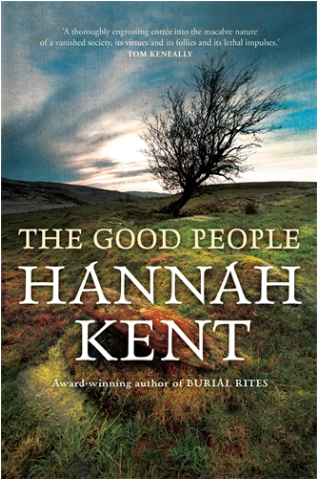This short story is a creative piece inspired by living in beautiful Port Douglas many moons ago. The story is told through the various times of the day to convey the sense of ‘a day in the life’ and play on the sense that some parts of the day flow quickly, while others pass more slowly. Happy reading.

Four twenty-two. The louvers rattle and shake, jarring me awake. Screech. A branch scrapes the side of the house. Damn, not another windy day. Glance at the window. It’s still dark. I snuggle under the blanket and let the swirling of leaves lull me back to sleep.
6:00. The alarm bleats but I’m already awake, pulling on my togs. In the dim morning light I pick up the car keys, towel, goggles and head to the pool.
Five past. Thirty laps today. Come on, you can do it. Don’t slacken off. One, two three, that’s it, get into the rhythm of the strokes. Best time of the day. Just me and the pool.
Half past. Legs stand at the end of my lane. A hand reaches in and taps me on the head. Nah, Mick, I’m not into pushing weights. I prefer the pool. Thanks though. Watch his ripped body stride into the gym. Definitely a ’roid boy. I smirk. Doesn’t mean I can’t appreciate the view.
Seven twenty. Long shower to wash away the chlorine. No matter how hard I scrub, the smell won’t come out.
Eight o’clock. A scream has me running. Steph? You okay? Oh, tree frog’s in the toilet again. Hang on a sec, I’ll get him out. He’s harmless you know. Chuckling, I relocate Charlie to the garden.
Breakfast. Toast with Marmite. Steph loves the stuff. Brought loads of it with her from the UK. I hated it in the beginning, but can’t get enough of it now. Definitely better than Vegemite. Sweeter, not so salty.
Five to nine. We’re late. Grab our beach bags, slip on sunnies and thongs, and rush out the door.
9:00. Cut, deseed and slice a box of pawpaws. Sneak a piece. The red ones taste so good. Sneak another. Arrange the fruit platters and clean up the mess.
Nine twenty. Change into my uniform. Pull my hair back into a ponytail. Stash my bag in the staff room below deck. Sunnies. Shit, where are they? Run back to the staff room, rifle through my bag. They’re not there. Fuck! Where are they? Dash up the stairs two at a time. Toilets! Fling open the door. Bloody things are sitting on the cistern. Right, I’m ready.
Nine thirty. Boarding time. Tour buses spew out their hordes of the day. A huddling mass of bright, fluorescent Lyra, towels, sarongs, hats and sunglasses scuttles along the jetty and up across the gangplank.
Twenty-five to. Tea? Coffee? With milk? ask the hostesses behind the bar in practiced lilting voices. From big kettles, they pour the requested beverages into white mugs. The platters of red and yellow pawpaw-smiles sit on a nearby bench-top. Already full hands reach for the exotic fruit. Asian tourists account for a large portion of the passengers today. Women teeter and totter about on three-inch heels, their hair stylishly gelled, faces immaculately made-up and the latest fashions cling to doll-sized frames. Out on the lower back deck chatters a group dressed in short shorts, socks and sandals—they’ve got to be German. Melbournians with stark white shoulders, arms and backs, all begging for a liberal dose of sunscreen, are trading an early winter for Port Douglas’ eternal summer. Mick and I place bets that most will be the colour of boiled mud crabs by mid-afternoon.
9:57. At last all three hundred and fifty passengers are on board, either lounging on the outer decks or reclining in seats within the cabins.
One minute later. Glance at the marina’s flagpole. The flag flicks in the wind. Twenty to twenty-five knots today, I reckon. Better push the seasickness meds. We could be in for a rough ride, says Janice, the head hostess. People laugh at me, point to the calm water of the inlet and say they’re fine. Please take it. Once you’re sick, it’s too late, I urge. More laughter. Crazy girl, they say.
Ten o’clock. The engines churn to life and the giant catamaran glides out of the marina to the mouth of the inlet and past the sheltered entrance. Pete, today’s Captain, propels her into high gear and with a surge we’re off. Open waters, here we come.
Half past. It’s choppy today and the catamaran rocks and rolls beneath my feet. My toes act as anchors and balancing weights, each one gripping and flexing in response to the waves’ rise and fall. The floor drops away suddenly. My stomach lurches at a moment of ocean-induced vertigo. Toes splayed, I rock on the balls of my feet and dance down the aisles. Grey faces seek my attention. Miss, miss, I’ll have some of that seasickness medication now. Too late. It won’t work now, I tell them. Go outside, get some fresh air, it’ll help.
Quarter to eleven. Steph passes me a handful of white paper bags, which I tuck into the back of my sarong-skirt. If things don’t ease up someone will blow, she mutters. And there he goes. Steph thrusts a bag under his nose just in time. I survey the aisle. The smell alone is enough to set off a chain reaction. Five of us scan the crowd, bags in hand, ready to run.
Twelve past. Scavenger time. I trawl the cabins and decks picking up mugs, cans, bottles and empty chip packets left on benches, under benches, on stairs, anywhere but in the bins. Poor Helen is on galley duty. Her face shines from the steam that pours out of the industrial dishwasher as she pumps through hundreds of mugs. The bins are full of food scraps, and tea and coffee dregs swirl around the sink. Gross. It’s the only place on the boat that still makes me queasy.
11:30. Arrival at the pontoon. Welcome to Agincourt Reef, everyone. As the deckhands secure the moorings, passengers gaze out over the water that surrounds us on all sides. We’re an island in this deep blue sea. Where’s the reef? asks a woman in a deep Texan drawl. Steph rolls her eyes. Out there, I point. Where? She raises a hand to shield her eyes from the sun, searching. It’s under the water, I tell her. Oh. She drops her hand. Steph laughs a little too loudly. I kick her in the ankle as the woman turns to glare at us.
11:35. The passengers file, obedient as sheep, off the boat and onto the pontoon.
Noon. The seafood lunch buffet rouses them and soon they’re fighting like seagulls over king prawns, salads, cold cuts and more. It’s gluttony on a plate.
Twenty past. Plastic gloves on, I weave between tables, stepping over beach bags, towels, and snorkelling equipment to clear plates littered with prawn heads and other food remnants. The snorkelling safety officers are checking equipment, and reassuring edgy passengers that sharks are not a problem. Don’t stand on the reef! shouts Mick to an Asian guy doing just that. I shake my head. Idiot. Every day there’s at least one.
12:30. The helicopter whirs to life, then darts like a dragonfly over the reef, wheeling and turning through the air before returning to land. Its passenger alights gesticulating to his camera, a smile overtaking his face. Another satisfied customer.
One thirty. Lunch is over.
One thirty-two. Playtime. I change into my swimsuit, grab a set of fluro pink fins, a mask and snorkel, and plonk onto the semi-submerged snorkelling platform. Schools of fish dart around my legs; cheeky ones nibble at a freckle on my ankle. It tickles and I giggle. The water laps at me, calls to me. Kicking off from the platform, I push out into the water.
1:40. A leak somewhere in the mask lets water trickle in, creating a second sea that sloshes at odds with the one that rocks my body up and down. I tug on the mask to stop the leak but flood it with water instead. Salt stings my eyes, burns my nose and brine trickles down the back of my throat. Yuck. Awkwardly treading water, I rip off the mask, scrape back my hair and reapply it. No leaks this time. Moments later, the reef disappears behind a humid mist. Cursing, I tread water once more, hawk back, spit into the facemask and rub the saliva over the glass. A quick rinse and I try again. At last the mask stays clear. Breathing hard, I float away from the safety of the pontoon, away from the dozens of tourists churning up the snorkelling area like paddle steamers on full tilt.
The waves lick over me, cooling the sun’s heat on my back. Below me, a rocklobster picks its way over some coral, its long, spindly antennae waving in front, leading the way. The tide is low and the coral is ablaze as the sun intensifies its colours. A school of parrotfish sail past their beak-mouths crunching on bits of coral. Awesome, a cleaning station—I’ve never seen one before. A large fish hovers in a coral valley while smaller ones clean it; others queue, waiting their turn. Fat nudibranchs, in stripes of starburst yellow, black and saffron orange, slug their way across the ocean floor. A tug on my fin. I swing around. Steph, the lusty sea nymph, has found me. She tugs on my arm. I follow as she weaves over the ribbon of reef, past coral clusters and giant clams with fat velvet lips. The reef suddenly drops off, sheer as a cliff. A blue-black nothingness races up to swallow me. My heart tattoos in my chest. Damn, it’s an illusion but the sensation of falling is real. I paddle backwards with my hands, reverse back over the reef. Cool huh, says Steph, with a wicked grin. Welcome to the edge of the Continental Shelf.
Two thirty. Shepard the punters, tired and sunburnt, back onto the boat.
Three. Lock the doors to the outer decks. Everyone, please stay where you are, comes the overhead announcement from Captain Pete. Head count time.
Three past three. People persist in going to the toilet and wandering around. Head count comes back wrong. We do it again. And again.
Twenty-two past. Tea? Coffee? With milk? chime the girls behind the bar once more. Coral cuts, anyone? Ointment in hand, I scan passing limbs for cuts, scratches and nicks to the skin. Oh, it’s nothing, says a man, waving me away, not believing that coral cuts are poisonous. Septic, festering wounds are common, I warn, applying ointment to resistant body parts.
Three forty-five. Gift shop time. Eager shoppers clamour around Steph to buy DVD’s, T-shirts, sarongs, swimwear and towels; mementos to be stuffed in the back of the wardrobe upon returning home. Slip outside and make idle chitchat with some passengers. The ocean is calmer, as if she too is relaxed after a day in the sun. Not a wave or ripple to be seen. Except off our bow-wave. A pod of dolphins playfully arch through the water.
Four ten. Lean against a railing on the top deck. Admire the view. The wind tears through my hair, streaming a blonde flag behind me.
Four fourteen. Purple mountain ranges creep into sight. The inlet. Chill time is over.
4:30. Goodbye. Thank you for coming. We hope you enjoyed your day. Sagging tourists trip back across the gangplank and are hustled toward the line of waiting tour buses. Mick and the other deckhands roll up mats, connect hoses and wash down the outer decks, windows and clean toilets. I polish the banisters back to a silver shine, empty bins, pick up rubbish tucked in between seat cushions and wipe face-smeared windows.
Happy hour. Knock off drinks. We all get a freebie. I sip mine, savouring the friendly banter of the crew. Another drink? Sure, why not.
Six. See you tomorrow, guys. Yeah, have a good night. Amble down the jetty to the sound of rigging lines clinking against metal masts as boats gently sway on the incoming tide.
Dinner. Steph and I sit at an outdoor table next to a voracious potted plant. Beads of moisture gather like sweat on my glass of sav blanc. The herbaceous smell of freshly cut grass and gooseberries reaches up to tickle my nose. Across the road, the tiny white chapel sleeps under the setting sun and the ground’s lush grass sighs in relief. Coconut palms, with big green and mustard coloured nuts nestled high in the crown, are reduced to silhouettes. The waitress, flushed from the heat but not rushed, delivers our platter of oysters and a bowl of lemon wedges. Flocks of starlings twitter and dive as they fight for space in a nearby fig tree. Fruit bats shadow their way across the dusk sky. The air is thick, heavy with humidity and the smell of darkness. Tart morsels of minerally flesh slide down my throat. Gooseberries and grass follow not long after. Here’s to life as a hostess, in paradise, says Steph. Her fingers brush briefly over mine. I toast my glass to hers. She smiles. I smile.
7:50. Hey girls, fancy seeing you here. Mick pulls up a chair. Steph’s fingers slide back to her side of the table.
7:52. The waitress brings over a beer. Mick chugs half of it in one go. Blah, blah. I stop listening. Steph laughs at his story. Her green eyes sparkle. More white noise. So, what do you reckon, Mel? Huh? ‘Drinks at the Iron Bar?’ I look over at Steph. She’s already reaching for her bag.
Eight ten. Strobe lights. They’re new. I squint against them. For a small bar, they sure pack ’em in. Popular place this one. Must be the staff. Buff boys with cheery good looks and trim, tanned Barbie dolls pump out drinks.
Three past nine. Order another Margarita. With a side shot of José Cuervo. Out on the dance floor, Steph’s hips gyrate in time to the music. Mick moves in closer. Letch.
Four past. Scull the tequila shot. Fire burns a trail down my throat. Yeah, that’s what I need.
Five past. Hey, you’re that chick from the boat. Great, a punter from today’s tour. Nod. He’s not bad looking. Smile. Nice face, shame about the body. Glad you had a good time. Uh huh. Yep. Just keep nodding. I’m here with a friend. Point to the dance floor. What are we drinking? Frozen margarita for me, mango daiquiri for her.
9:15. Come dance with me, a voice breathes in my ear as fingers find mine. Weave unsteadily through the crowd onto the dance floor. Pulsing, sweaty bodies push us closer together. I close my eyes, surrender to the music.
Later. Outside. The dull echo of music in my ears. A breeze blows across the thin film of sweat on my skin. Ah, that’s so good. Gentle hands cup my face as soft, mango-flavoured lips explore mine. Now this is paradise.

 Simply brilliant. That’s how I’d describe this book. Evocative and touching with simmering darkness, Hannah Kent’s The Good People is a fabulous piece of historical fiction inspired by true events.
Simply brilliant. That’s how I’d describe this book. Evocative and touching with simmering darkness, Hannah Kent’s The Good People is a fabulous piece of historical fiction inspired by true events. 








